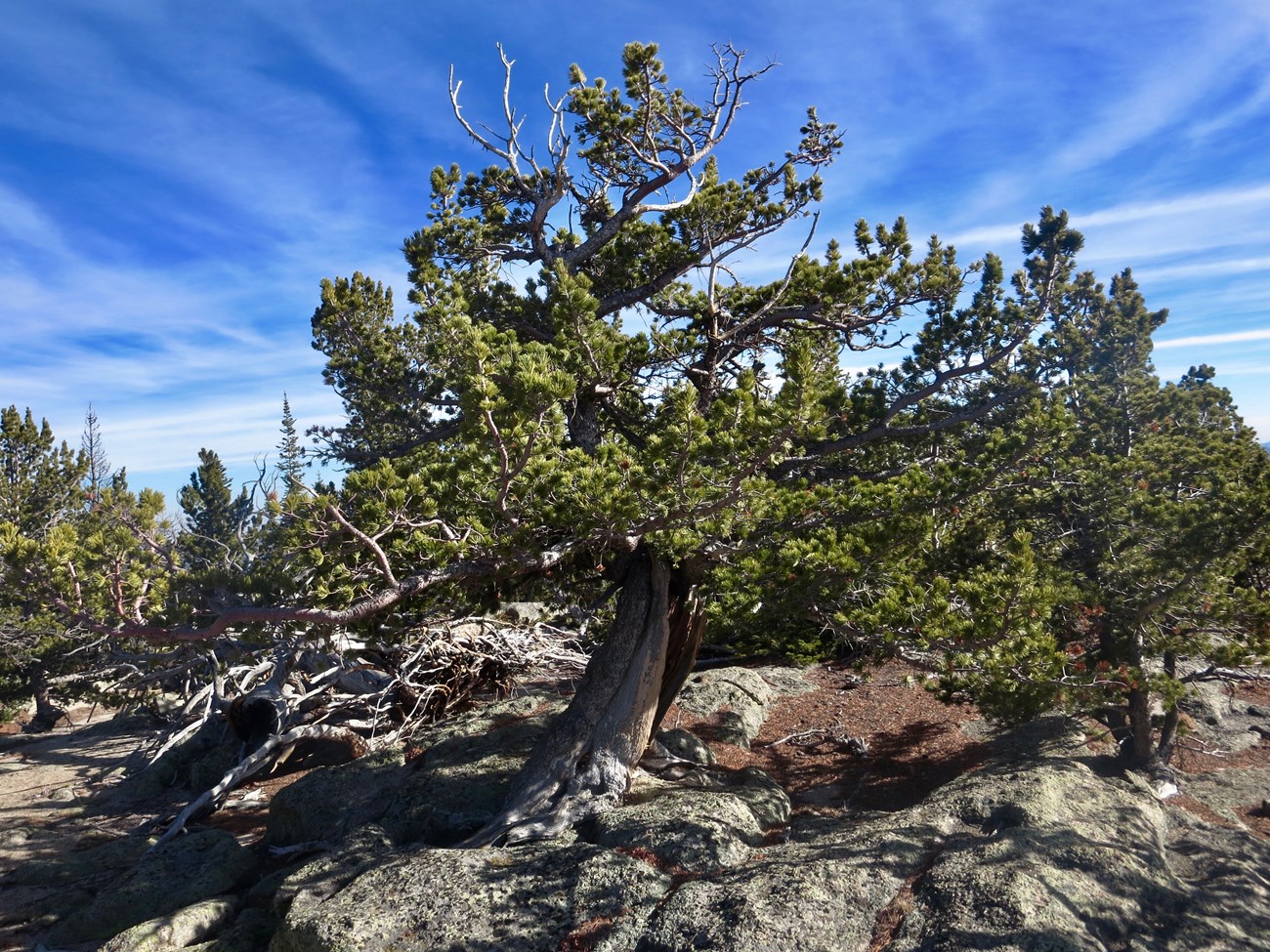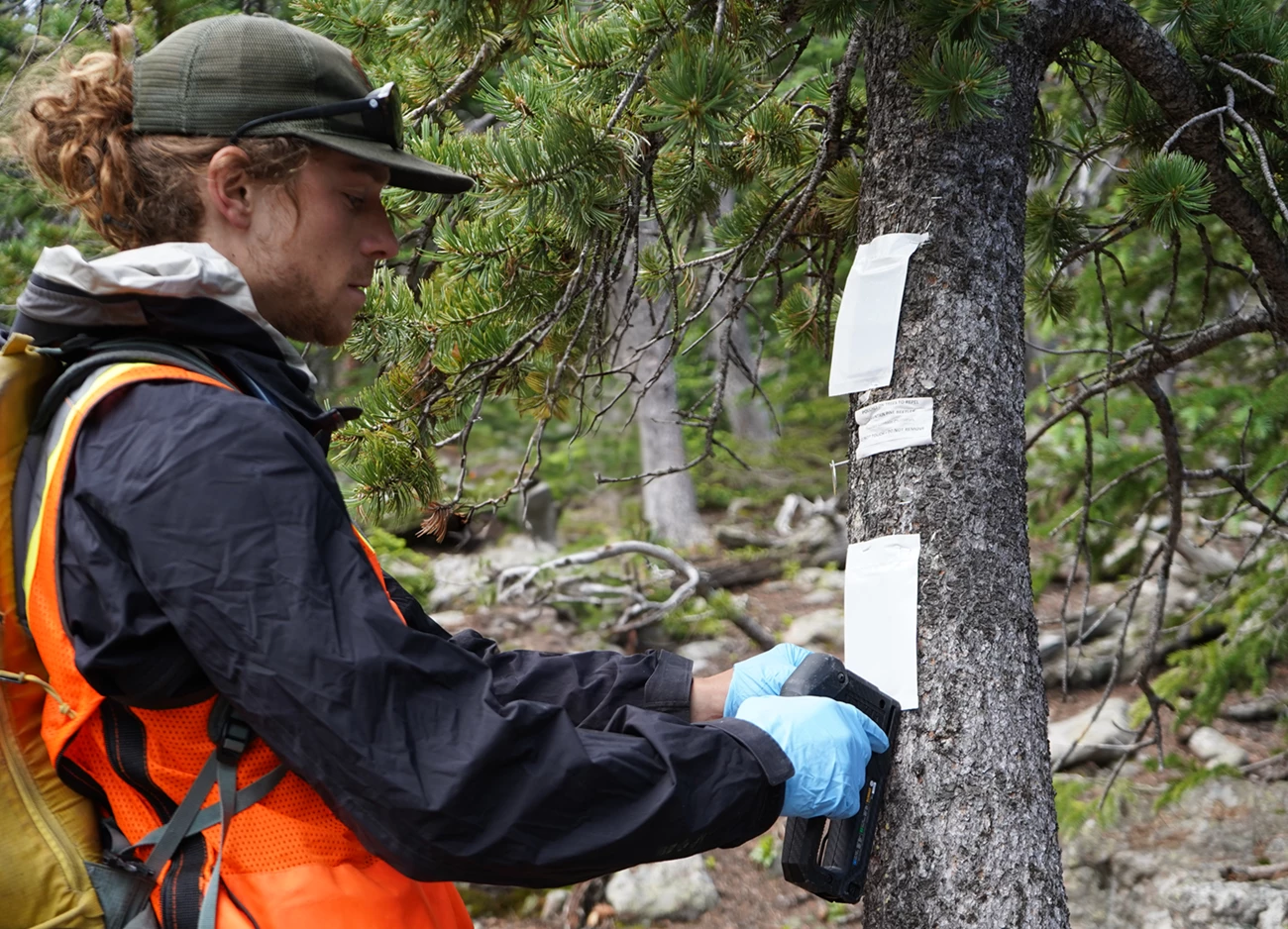Last updated: September 27, 2024
Article
Limber Pine Conservation

NPS photo
Limber pine populations in RMNP and the surrounding area are declining due to climate-exacerbated drought and mountain pine beetle outbreaks. Since 2010, limber pines in the park have faced the additional threat of white pine blister rust (WPBR) - a fatal disease caused by a nonnative fungus. Scientists predicted that the combined effects of these stressors would result in a 40% loss of limber pine by 2030 without intervention

NPS photo
Rocky Mountain National Park has a Forest Health Program with dedicated staff who help implement the Proactive Limber Pine Conservation Strategy. Park staff collect data on limber pine health and apply verbenone packets annually in 17 plots throughout the park. In September of 2023, park staff also planted 270 limber pine seedlings near Mirror Lake in the northern part of the park to restore a limber pine stand lost to the 2020 Cameron Peak Fire.

NPS photo
